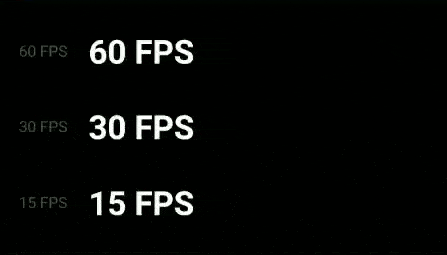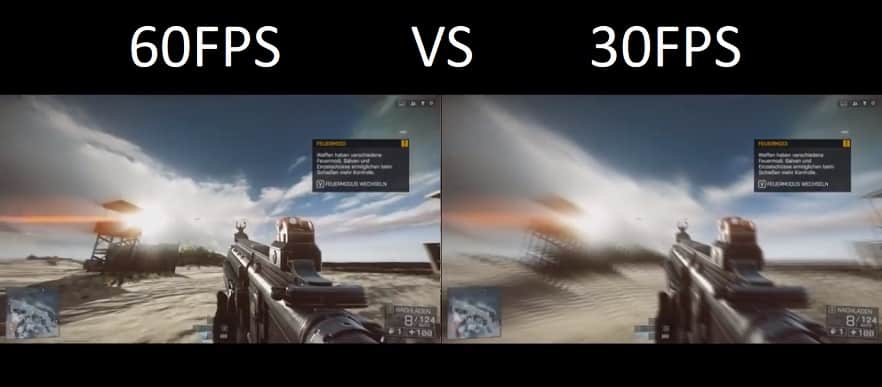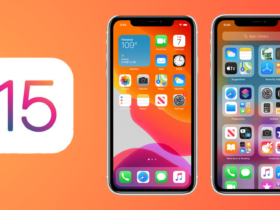If you come to this article then you are probably new to the gaming world. Of course, after you entered the world of games, whether through a personal computer or through console game players, you began to hear and see the abbreviation FPS a lot. Most of you have seen this shortcut a lot in games, especially in reviews of hardware hardware capabilities such as processors and graphics cards in running a specific game. Well it is important that you know what it means.
What exactly is FPS? What does that mean inside the game? What is it described exactly? Why is it considered a standard when comparing the capabilities of processors or graphics cards in running games? Read on, we will answer almost all of the questions on your mind in this article!
Read also:
- The best gaming phones that you can buy at the beginning of 2021.
- The Complete Guide to AMD 3rd Generation Processors, The Ryzen Processors That Changed the Marketplace!
- What is undervolting, its benefits and disadvantages, and how do you apply it to your computer’s processor.
- What is ping and latency and packet loss in online games? What are the ways to improve them?
What exactly is FPS?
Okay. FPS is a shortcut to ” Frames by Per the Second ” any ” number of frames per second .”
To clarify things more
in the video
When you open your mobile phone camera and in the video shooting settings, you will see a menu from which to choose the video resolution you want to shoot. Let’s take the options ” FHD 1080p, 30fps ” and the option ” FHD 1080p, 60fps ” for example. The first option indicates that you can shoot Full HD video at 30 frames per second, and the second option is Full HD video at 60 frames per second. This means that, in the first option, your phone takes up to 30 pictures per second and collects and displays these images behind each other as an animated video. In the second option, the phone will take 60 photos per second and compile and display them in one second.
In a simple calculation, if you shoot a 10-second video using the first option. The resulting video is, in fact, made up of 300 images that were displayed in succession to form the motion video that you shot. If you use the second option, the resulting video will consist of 600 images that will be displayed consecutively within 10 seconds while watching the video.
This means that the more video you wanted to capture or watch, the higher the frames per second count, the smoother it will be during viewing.
In the screens
FPS refers to the number of frames a screen can display in a second. For example, if you play a video that has 60 frames per second, you will only see 30 of them. That is, the video will appear to have been produced or captured at the 30fps option. Monitor ability to display frames based on screen refresh rate in Hz.
Read also:
In games
FPS in games refers to the number of frames your graphics card and processor can display per second. Depending on the speed and capacity of your computer processor and graphics card, game scenes are created in the form of a number of frames that are displayed consecutively. The stronger your computer, the more frames it can create to display it to you.
Also, the acronym FPS in some games refers to First-person shooter, meaning games in which the gameplay is first-person perspective. Don’t confuse it with FPS of frame per second.

What is the appropriate frame rate in games?
Typically, FPS ratings are rounded to the following:
- 30 FPS: The most common frame rate in most console games and on some low-end PCs. It is also considered as a minimum so that the game can run with acceptable smoothness. In fact, most people don’t notice any stuttering or choppy playback until the frames drop to 20 frames per second or less.
- 60 FPS: This is often seen as the ideal frame rate. 60fps can only be achieved on Consoles with optimized games that support this. By comparison, computers with average specifications intended for games will be able to configure 60 frames per second in most games. Of course, in games with high graphics quality (like: Red Dead Redemption 2) you will need to lower the graphics quality to reach this number. This is also the upper limit for the frame rate that can be displayed by regular monitors and televisions with a refresh rate of 60Hz.
- 120 FPS: This number can only be reached on the new PlayStation 5 and Xbox Series X consoles and with the enhanced games that support this. In return, you will need a high-end gaming computer. You will also need a monitor with a 144Hz refresh rate. With 120 fps you will notice significantly greater smoother than 60 fps. However, due to high hardware requirements and high prices, this number is popular with professional and amateur gamers.
- 240fps: 240fps peak frame rate can only be displayed on 240Hz monitors. In fact, the difference between 120 fps and 240 fps is indistinguishable. Besides the high costs of devices and screens that can access this number. This makes targeting 240fps limited to a few professional gamers.
Keep in mind that it’s virtually impossible to maintain a completely stable, steady frame rate. The frame rate will fluctuate up and down no matter how powerful the device you are playing on or how good the game is by changing the scene you see in the game. However, as the frame rate increases, these fluctuations become barely or completely unnoticed.

Don’t confuse the refresh rate and FPS
The refresh rate and the number of frames per second are related but different. The refresh rate includes the repeated display of the same frame, while the number of frames per second measures the complete number of frames from new data. We can define FPS as the frames or pictures that are displayed per second. We can say that the refresh rate is the amount of data that the screen can display in a second.
Let’s give an example to clarify the matter, when you move the mouse pointer in the desktop, the smoothness of movement here depends on the refresh rate because you are changing the width of an element (the mouse pointer) within one fixed frame (the desktop). But if you are playing a video game, for example, there will certainly not be a single frame of view, but with every movement in the game there is a completely new frame here, and here we rely on the FPS measurement.
Why is the refresh rate important?
The refresh rate is the maximum number of refreshes your screen can perform in a second. To take advantage of a higher refresh rate display, your computer has to send data to the screen much faster. Most applications like productivity tasks or watching movies will not be affected by the refresh rate at all. Most movies and videos are displayed at either 24 or 30 frames per second (fps), which 60Hz screens can handle and display well. A higher refresh rate will not make your videos look better.
Refresh rates are only important when playing games. When you want to play any game at a frame rate of 100 fps, for example. You need a graphics card fast enough to create 100 scenes per second of the game and send them to your screen. You will need to have a screen with a 144Hz refresh rate to be able to quickly receive and process the data sent by the graphics card. That is, a screen with a 144Hz refresh rate can receive and process up to 144 frames per second and display it without any problems.
Does FPS give you an edge?
The answer is: Absolutely yes. But it may be more or less than you might expect, and some people may not gain any advantage at all.
How does high FPS help?
By seeing more frames on the screen you will be able to react more quickly to any changes that happen. Moreover, the game’s more responsive environment allows you to better monitor and analyze it in real time.
Is higher frames per second (FPS) better?
Most agree unanimously that higher is better. However, in reality, in some cases a lower frame rate may be better.
لماذا؟
The reason is smoothness. If your computer is weak and struggles to maintain a steady frame rate, you will notice frequent drops in FPS. When you play at 50 frames per second, for example, and suddenly the number of frames drops to 35, you will notice a stutter in the picture. It would be much more fun to set an FPS limit at 30 frames. This way, you will get a steady and smooth gaming experience and will reduce the load on computer components and reduce their temperature.
The vast majority of movies are shot at 24 frames per second, so 30 frames per second can give your game the feeling like you are watching a movie. Also, in some older games or those without motion capture, the animation may look very lackluster at high frame rates.
A benchmark for comparison
The number of frames you can get in a particular game is a criterion when comparing the capabilities of PC processors and graphics cards in gaming PCs. For example, a graphics card with a specific processor that can run a game like GTA V at 70 frames in high graphics is better for games than a graphics card that runs the same game with the same settings with the same processor at 50 frames per second. Therefore, you always find the frame rate in certain games as a benchmark for comparison between computer components.
This criterion may determine your choice of the following graphics card for your computer. For example, if you are a Fortnite professional, you do not need a high-class graphics card to run the game at 100 frames per second. You can save money and buy a mid-range graphics card that can do that.
This standard also determines which monitor you need to purchase for your computer. If your computer cannot run your games at more than 60 frames per second, then of course you do not need to purchase a screen with a high 144hz refresh rate. A screen with a refresh rate of 60Hz will do the trick.

Screen tearing problem
The common computer game problem that you can encounter is called screen tearing. It occurs when your graphics card sends out frames at a rate that is higher than the display can handle. If you try to play a game at a high frame rate on a screen with a low refresh rate, you will encounter this problem. It will look as if the screen is folded or torn in the middle. See the image above.
To avoid this, games’ display settings are usually selected automatically based on the screen refresh rate. So if you have a screen with a refresh rate of 60Hz your games will not run at more than 60fps. There are solutions to this problem such as G-Sync, V-Sync, and Freesync technologies.
To sum things up
Understanding what FPS means is very important for both amateur and professional players. Having more frames gives you a better experience and more smoothness. You will be able to react more quickly and respond with a faster response to any changes that occur during the game. We hope you found all the information you need about FPS in this article.






إترك رد